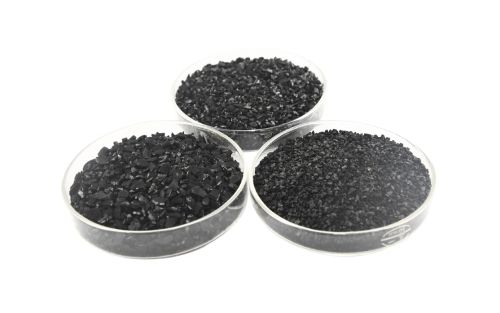
Frequently asked questions about activated carbon
We have been in the activated carbon business for over eighteen years and PUROCARBON prides itself on our experience and knowledge of the industry. We take our customers seriously and take the time to answer any questions they may have to make sure they get the solutions they need to solve their activated carbon problems. We get asked similar questions all the time, so we've put together this handy FAQ section to help you get started.
If you do not find your question or need more information, please send an email to info@activecarbon.es or use the contact form at the bottom of this page.
What is the difference between powdered activated carbon and granular activated carbon?
The powdered activated carbon and the granular activated carbon are porous carbon materials with a high surface area and are used to adsorb various substances. The main difference lies in shape and size: powdered activated carbon is in the form of powder, with a particle size of less than 100 microns; granular activated carbon is in the form of particles, with a size of 0.5-5 mm.
Powdered activated carbon has a high specific surface area, high adsorption capacity and low price, but it is prone to generate dust, requires additional filtration, easily clogs filters and is difficult to recycle. Granular activated carbon is easy to handle and recycle, not easy to generate dust, but the specific surface area is low, adsorption capacity is not as good as powdered activated carbon and the price is higher.
The choice of powdered or granular activated carbon depends on the application and demand. Powdered activated carbon is commonly used in food and beverage decolorization and deodorization, such as sugar decolorization, fruit juice decolorization, etc. Granular activated carbon is widely used in water treatment, gas treatment and other fields.
Does the adsorption capacity of activated carbon decrease with time?
Yes, it is true that the adsorption capacity of activated carbon gradually decreases with time. The main reason for this phenomenon is that the adsorption process of activated carbon is essentially a dynamic equilibrium process. Activated carbon adsorbs pollutants in gases or liquids due to its highly developed pore structure and large specific surface area. However, with the accumulation of adsorbed substances, the adsorption sites of the activated carbon are gradually occupied, resulting in a decrease in its adsorption capacity.
In addition, activated carbon is subject to physical wear and chemical changes during actual use. Particles can be damaged by abrasion or clogging, chemical adsorption can cause changes in surface properties, and environmental factors such as temperature and humidity fluctuations can also affect its performance.
To maintain the adsorption efficiency of activated carbon, periodic replacement and thermal regeneration is recommended to help restore its adsorption capacity. At the same time, optimizing operating conditions, such as controlling air flow and avoiding extreme environments, can extend the life of activated carbon. If you need more detailed technical guidance or assistance, we are available for professional advice and support.
How to regenerate activated carbon?
Regeneration of activated carbon is mainly performed by physical or chemical methods, with the objective of removing adsorbed contaminants without destroying their structure. Physical regeneration is mainly thermal regeneration, in which contaminants are desorbed by heating; chemical regeneration may include solvent extraction or chemical decomposition; and biological regeneration, in which microorganisms are used to break down organic matter.
Thermal regeneration is the most commonly used technique and consists of three steps: drying, carbonization and activation to remove adsorbed organics at high temperatures. In addition, wet oxidation, solvent extraction and electrochemical regeneration methods are also available for different scenarios and needs.
The choice of regeneration method requires consideration of the characteristics of the activated carbon, the type of contaminant and the economic cost. During the regeneration process, conditions such as temperature, time and pressure must be controlled to ensure performance recovery. Periodic inspection and maintenance are essential to avoid performance degradation. At the same time, the possible loss of activated carbon during regeneration must be taken into account and replaced with new carbon at the appropriate time.
Request For A Quotation
Are you looking for a high quality and reasonably priced activated carbon product solution? Don't hesitate any longer! Contact us now for a customized quote.
